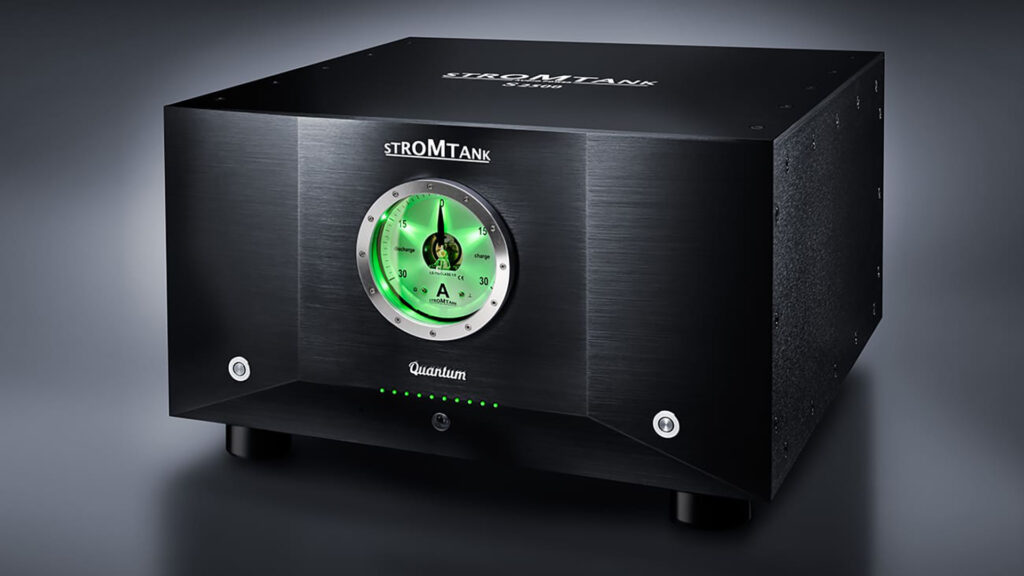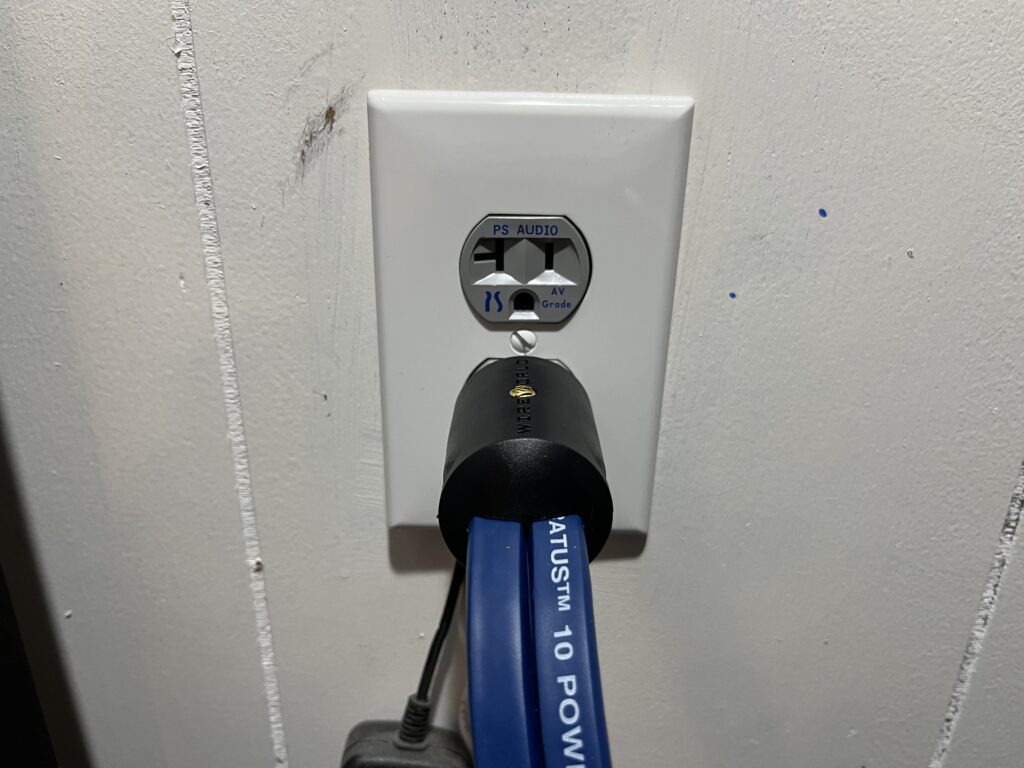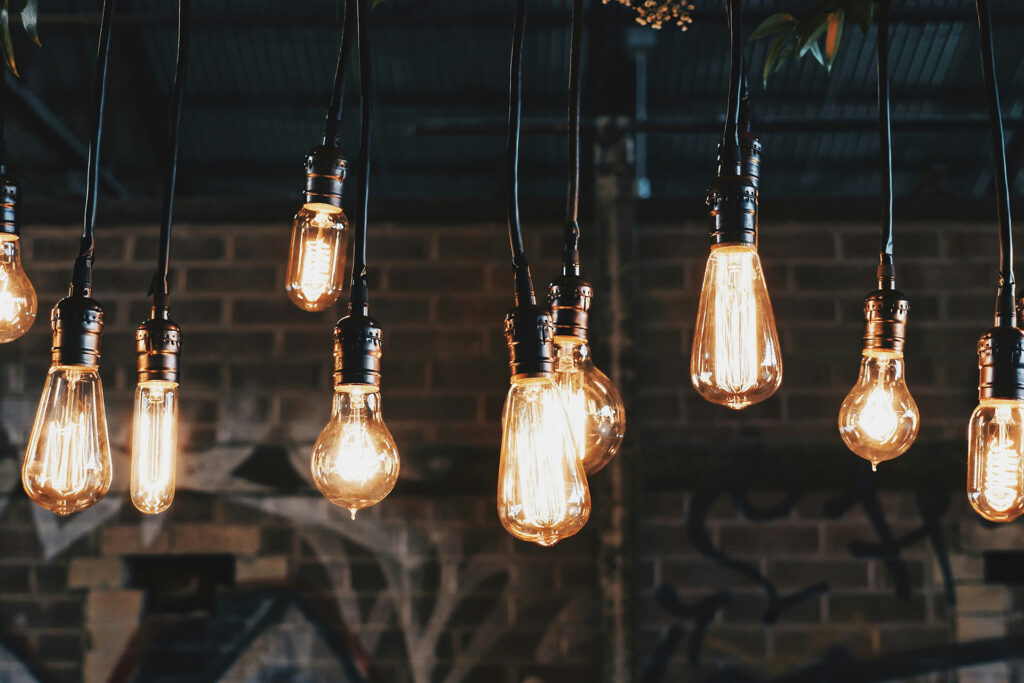When I purchased a new home (new to me, not to the world) in 2023, our publisher, Jerry Del Colliano, had made a series of creative suggestions to me about things I can do to get the most out of my listening room. Since the home that I recently purchased didn’t yet have a dedicated listening room, I was going to have to build something out to meet my needs as a professional audio reviewer. Now, there can be a lot to think about when you are building a room from the ground up, let alone one that you are looking to optimize for audio.
You need to consider the house itself. Where would the main listening room be? Does it lend itself to good acoustics? Speaking of acoustics, what treatments would you use to get your acoustics dialed in at the physical level (meaning before any possible digital room correction, like the kind you find in a Bluesound Node these days)? Will you be pissing anybody off with sound, due to reasonable proximity? You might write an offer on a house that would have that as an issue. In my case up here in Canada, I was able to find a home with a basement that was born to be a finished living space and, for most of the basement, I have done that in making it a workspace, as well as an audiophile listening room.

What About the AC Power and Overall Electricity in an Audiophile Listening Room?
A topic that too many of us audiophiles overlook is an easy and affordable one: electricity. There are different ways that you can go about improving the electricity that runs into your audio gear, but before we get into that, let’s start with what the initial problem really is. The average person views the electricity that comes into their home as being nothing more than that electricity. It powers the television. It makes sure we can charge our phones and laptops, and is the juice behind being able to turn on the lights. However, the electricity that comes into our homes isn’t perfect, as electricity isn’t always running at a perfect 60Hz.
In fact, the nominal, or ideal, electrical incoming service is 240 volts, 60 Hertz. The panel box uses one of the 240v wires, or one leg, the neutral wire and the common ground, to supply 120v to the home. This makes it very simple for higher-voltage devices, such as 240v HVAC units, as well as the table lamp on your nightstand, to have the proper voltage to work. However, these voltages are nominal, and voltage does vary. For years, many audiophiles have claimed their system sounds better late at night, because the incoming power to the home is more stable. In truth, most electrical components are designed to operate from about 117v to 125v without any problems. This, of course, varies by manufacturer. In the case of our audio systems, in most applications, the power supply will convert the incoming AC power to DC and will provide a stable, direct current for normal operation of the component. Where things get somewhat dicey is when the voltage from the wall outlet drops too far, or is increased too high, and the protection circuits in the component will turn the device off so the circuitry is not harmed.
Perhaps of even greater concern to audiophile systems are power surges. Probably the most common culprit are lightning strikes. They have the tendency to create catastrophic problems, namely burning up the circuit boards on appliances and devices all over the house. Another issue is amperage. While voltage is very simply defined as the amount of electricity, amperage is a measurement of the rate of flow of electricity. Electrical circuits are designed to monitor how much amperage is being utilized. It is advisable to pay attention to the amperage requirements for the total system to be sure it does not exceed the capacity of the entire circuit.
Bottom line, electricity is a very real component of our audio systems. There is not a lot we can do to change the service that comes into our home, at least not easily. Homes are wired as they are for a reason. Unless you are a licensed electrician, it is best to leave the power in your home to professionals.

How Do AC Power Conditioners or Regenerators Really Help Audiophiles?
Power conditioners and power regenerators both strive for the same thing – clean, stable, consistent electrical power. Both may range in cost from about $2,500 to $25,000, and some are even more. An audiophile power conditioner is essentially a passive device, and most are designed to convert any unwanted electrical noise on the circuit to heat, which may then be harmlessly dissipated.Most power conditioners have a very friendly operational range. For instance, while this varies by manufacturer, most are designed to work very well on an electrical service range of 100v to 260v, and 50Hz to 60Hz. This should cover any incoming service the home will supply. Another benefit of power conditioners: the better ones will also address grounding issues. Grounding is vastly important, as the better the overall ground, the more the signal to noise ratio may be reduced. Lastly, many power conditioners have overload protection, so if a power spike does occur, such as lighting hitting very close by, the protection circuit in the conditioner will trigger and the audio system will very likely be saved.
An audiophile power regenerator has the same overall goal: to supply stable, clean power. They are essentially the same thing as a power amplifier. The regenerator takes the incoming power from the wall, converts it to DC, then reconverts it to a totally stable, virtually perfect sine wave, a noise-free electrical signal to feed the audio system. Power regenerators need to be sized for the demand. The more audio components, especially power-hungry amplifiers, the larger and heavier the regenerator will be and the more space it will occupy. Regenerators tend to also create a significant amount of heat, especially as they get larger in size. When considering a power regenerator, it is advised to be sure the unit will address grounding, as well as overload conditions.
What may be best about either of these devices is their ease of use. Plug them into the wall, plug the components into the conditioner or regenerator, turn on the power, and enjoy the benefits of a stable, clean electrical service.

Anybody Interested in Some Lower-Cost Audiophile Power Upgrades?
I recently made two upgrades that made a world of difference to the sound of the music. The first one was changing the stock power cord that came with my Anthem MCA 225 gen 2 amplifier to a Stratus 10 Power Conditioning cord from Wireworld. The is the low end of the power conditioning cords that Wireworld has on the market, and a one-meter power cable has an MSRP of $130. Now, this is something that every audiophile can find space for in their budget and likely see a real-world difference in the quality of the music when they first put it into use. The second change that I made was swapping out the standard $2 electrical outlet that my amplifier was plugged into, and upgrade to the PS Audio PowerPort Classic receptacle. What makes the PowerPort Classic notable is that it exceeds hospital grade in grip strength (how well your plug stays in the wall), contact resistance, and current delivery. Each one of these receptacles costs about $50, and you can save a little bit more money by investing in five or more directly from PS Audio. The sonic results in my room, which admittedly has “less than perfect power,” were easily heard by anyone. These affordable audiophile AC power upgrades greatly improved the soundstage in the clarity of the music. The improved overall sonic clarity in my system was easy to hear, as previously the sound was just muddier. Bass performance seemed better, too. That’s hard to measure, but I am willing to add it to the list of advantages here. I cannot stress enough that these were not changes that made the music sound a bit better – these were night and day differences. In the end, for what cost less than $200, I was getting significantly better sound out of my gear. There are certainly other brands out there that offer similar products; these are just the brands that I had chosen for myself.

Why Every Audiophile Should Call His or Her Local Electrician …
Not everybody is a DIY guy, and we don’t really recommend you messing around in your circuit breakers or dealing with any of your AC power, as it is just way too dangerous. You likely can’t do anywhere near as good a job as a professional electrician can, either.
One of the most underrated audiophile upgrades is to change out your light fixtures. By spending $100-ish on your light fixture, you can reduce amounts of actual background noise in your room, which simply and immediately makes your existing audio system sound better. A quieter room allows for much more detail to be heard. Few of us have recording studio-like listening environments, because we live in a house that isn’t purposely constructed for audio and/or recording. Making the room quieter is a massive upgrade to your sound. You might need some more breakers in your box to do trickier things with a lighting designer, but if you’ve got the electrician over, why not have him or her upgrade your breakers too?
Another fantastic audiophile AC power upgrade is to upgrade the circuits that power your listening room from 15 to 20 amps. This is a professional upgrade only. Your electrician can upgrade your power service, so that you have more headroom via a 20-amp circuit over a more standard 15-amp option. The sonic effect is like having more headroom in your amp. It is not a staggeringly obvious effect, but it is noticeable and well worth doing, considering the relatively low cost.
The second thing you can ask your electrician to do for you is to check the solder points on your existing outlets. Those points could need to be cleaned up, added to, or redone, which would also reduce the extra noise that could be coming into your audio system through your AC receptacle because of a sloppy or old installation. The outlet might work to power your smartphone just fine, but a 30-year-old outlet can be quite noisy, and the fix is a piece of cake (and very affordable for you) for a good electrician.

Some Final Thoughts on Audiophile Power Upgrades in Their Various Forms …
It is fascinating when you consider the real-life projects you (or a modestly-priced yet skilled professional) can do that will improve the sound of your music. It can be so easy to always just look for upgrade paths for the components in your audiophile system. I am certainly guilty of dreaming of different gear like the rest of you, but we shouldn’t lose sight of some of the simple things that we can do ourselves or with a friend that can make just as much of an impact, and these small electrical changes really proved that to me.
As I get more time and budget, I will continue make upgrades to my listening room, but I couldn’t help but to sing from the mountaintops to the audiophile community about how much two simple upgrades to the electricals of my room made to the quality of sound. There will no doubt be many challenges, and likely many triumphs as well, that I hope to share with all of you. One of the fun things about the audiophile community is the ability to share these details (big or small) that can help improve the listening experience for all of us.
Do you have clean power where you live or is it less than perfect? What AC power upgrades have you tried over the years? What has worked the best? Have you brought over the local electrician to check out your home? Tell us about your journey here and we will post your comments super-fast.




Great article. I am installing solar w/ batteries for my electricity. Essentially, I won’t be getting my electricity from the grid anymore (well, very little, if any). Any thoughts on those of us moving to this new power source and our systems?
I’m a skeptic regarding AC power quality, unless you have a known issue or your house wiring is really old. I’ve had more problems with electrostatic discharge causing equipment misoperation during dry winter months than AC. I live <1 mile from a TV transmitting tower so I installed a whole house AC over voltage protection unit to protect against lightning. My antennas are installed inside the attic (not outside) for the same reason. If you're having an electrician check or modify your AC wiring make sure you only have one ground point. If there's more than one ground (including antenna mast grounds etc) lightning current flowing thru the soil between the ground points can destroy attached AC equipment.
I believe the well known audiophile, Michael Fremer, optimized the AC power to his equipment & made YT videos describing the process. Good luck!
“The second thing you can ask your electrician to do for you is to check the solder points on your existing outlets.”
AC never has soldered connections!
THANK YOU FOR THE KIND WORDS…
I met with our electrician last week to discuss this topic too. I LOVE the concept and AC is crazy expensive in LA because the LADWP is often the cause of these fires (including now likely the Palisades one – pending suit will determine that) thus higher rates passed on.
Jeff Rowland made some great preamps that worked on battery power. Having a reserve of power from solar has environmental and audiophile potential benefits.
I wonder if I could write SOME of it off? CPA meeting today. That could be a good question 🙂
j
My first house had a very old (fuse) service panel and the lights would dim when I turned on my main amp. Upgrading the service panel and running a dedicated 20A branch circuit to my audio equipment completely fixed that issue and made some minor improvements to the performance of the equipment that I could actually hear – possibly due to better grounding or improved current delivery. That was a long time ago and I used actual “hospital grade” outlets.
Fortunately, my current house has a separate 100A service for the basement and had an unused 40A hot tub sub-panel that was easily repurposed for the audio system. I had dedicated 10AWG wires added for 20A branch circuits for the audio system and used those exact PS Audio Power Port outlets you mentioned. I didn’t hear any difference in that upgrade, but I’m glad I improved my power to be sure it wasn’t the weakest link in my system.
Solid upgrades Terry
First things first. Try to install dedicated 20amp (12AWG) lines to your system, perhaps reserving one for digital and a second (or more!) for analog. Terminate them in high-grip AC duplexes that are “industrial” grade. (“Hospital” simply refers to the longer ground contacts that connect before the live and neutral so to prevent an accidental explosion in a gas-filled lab or ER suite. But usually manufacturers reserve hospital construction for their best duplexes. P&S, Hubbell, Leviton…they all make premium duplexes in the $10-15 range. (Note that the ONLY improvement I’ve noticed from overpriced AC duplexes is with the ACME true Ag-plated duplexes, as I use in my ArgentPur Power Boxes.)
THEN set up your system and listen to it. Is noise floor low enough and res high enough that you’re now finished? Maybe. All depends upon your local grid, inviting the introduction of a conditioner or even regeneration if isolation and clean-up are requiured. Try to audition before purchase, as too many low-priced offerings quench dynamics or actually reduce detail.)
If you’re not capable of handling AC house wiring only then hire a pro. Decades ago I set up my dedicated lines using Belden’s superb 83803 Teflon-based shielded cable, but now think that because of its much higher prices this may be overkill if longer lengths are required. (83704 and 83754 still make nice star-quad DIY power cables though.)
If you do make your own PCs be sure to use high-grip connectors, like industrial/hospital AC males and IEC320 females like WattGate or Viborgs (common Schurter IECs and cheap OEM can loosen too easily.)
You can get by with 15a (14AWG) house line for most front-end components, but power amps especially should be fed by 20a (12AWG) service.
As someone who has added a power regenerator to my system, I would like to say that you never know how much.crud comes down the line to your equipment until it’s gone. Because of their cost, make your selection from a dealer or manufacturer who offers at least a thirty day trial period to see how it matches up to your gear. You’ll probably determine whether it’s worthwhile in a few days but definitely give yourself time to overcome the “new toy” effect.
Of all the upgrades, dedicated lines for you audiophile gear is at the front of the list.
The best tip I ever learned about power was from Audiophile in the 1980s, and I have a degree in BS in Ind Elec. Along with your good suggestions here I had electrician in the last 4 houses I built in 50 years install a dedicated 20 amp service with 10 gauge cu wire going to high grade plugs. I upgraded to a Furman power conditioner sized for me 8 outputs. No problem running my vintage MC 7270 or Dynaco 400 I built in the 70s. Old school here, finally invested in Cardas replacing the Tara cables, story for another time. Living in FL 24 yrs. no lighting strike yet but had one in GA, ouch. Insurance companies know nothing about high end replacement cost!